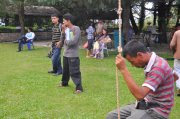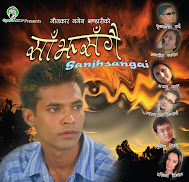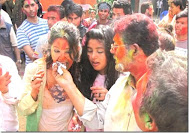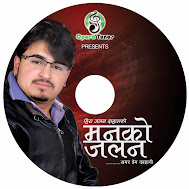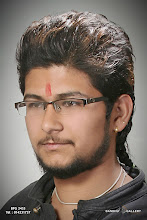Featured articles

Etiam tincidunt lobortis massa et tincidunt. Vivamus commodo feugiat turpis, in pulvinar felis elementum vel. Vivamus mollis tempus odio, ac imperdiet enim adipiscing non. Nunc Read More ...

Proin ac leo eget nibh interdum egestas? Aliquam vel dolor vitae dui tempor sollicitudin! Integer sollicitudin, justo non posuere condimentum, mauris libero imperdiet urna, a Read More ...

Etiam ultrices felis sed ante tincidunt pharetra. Morbi sit amet orci at lorem tincidunt viverra. Donec varius posuere leo et iaculis. Pellentesque ultricies, ante at Read More ...
In the 1860s, mechanisms for producing two-dimensional drawings in motion were demonstrated with devices such as the zoetrope, mutoscope and praxinoscope. These machines were outgrowths of simple optical devices (such as magic lanterns) and would display sequences of still pictures at sufficient speed for the images on the pictures to appear to be moving, a phenomenon called persistence of vision. Naturally the images needed to be carefully designed to achieve the desired effect, and the underlying principle became the basis for the development of film animation.
With the development of celluloid film for still photography, it became possible to directly capture objects in motion in real time. An 1878 experiment by English photographer Eadweard Muybridge in the United States using 24 cameras produced a series of stereoscopic images of a galloping horse, is arguably the first "motion picture", though it was not called by this name.[1] This technology required a person to look into a viewing machine to see the pictures which were separate paper prints attached to a drum turned by a handcrank. The pictures were shown at a variable speed of about 5 to 10 pictures per second, depending on how rapidly the crank was turned. Commercial versions of these machines were coin operated.
A frame from Roundhay Garden Scene, the world's earliest film produced using a motion picture camera, by Louis Le Prince, 1888
By the 1880s the development of the motion picture camera allowed the individual component images to be captured and stored on a single reel, and led quickly to the development of a motion picture projector to shine light through the processed and printed film and magnify these "moving picture shows" onto a screen for an entire audience. These reels, so exhibited, came to be known as "motion pictures". Early motion pictures were static shots that showed an event or action with no editing or other cinematic techniques. The first public exhibition of projected motion pictures in America was shown at Koster and Bial's Music Hall in New York City on the 23rd of April 1896.
Ignoring Dickson's early sound experiments (1894), commercial motion pictures were purely visual art through the late 19th century, but these innovative silent films had gained a hold on the public imagination. Around the turn of the 20th century, films began developing a narrative structure by stringing scenes together to tell narratives. The scenes were later broken up into multiple shots of varying sizes and angles. Other techniques such as camera movement were realized as effective ways to portray a story on film. Rather than leave the audience with noise of early cinema projectors, theater owners would hire a pianist or organist or a full orchestra to play music that would cover noises of projector. Eventually, musicians would start to fit the mood of the film at any given moment. By the early 1920s, most films came with a prepared list of sheet music for this purpose, with complete film scores being composed for major productions.
A shot from Georges Méliès Le Voyage dans la Lune (A Trip to the Moon) (1902), an early narrative film.
The rise of European cinema was interrupted by the outbreak of World War I when the film industry in United States flourished with the rise of Hollywood, typified most prominently by the great innovative work of D. W. Griffith in The Birth of a Nation (1914) and Intolerance (1916). However in the 1920s, European filmmakers such as Sergei Eisenstein, F. W. Murnau, and Fritz Lang, in many ways inspired by the meteoric war-time progress of film through Griffith, along with the contributions of Charles Chaplin, Buster Keaton and others, quickly caught up with American film-making and continued to further advance the medium. In the 1920s, new technology allowed filmmakers to attach to each film a soundtrack of speech, music and sound effects synchronized with the action on the screen. These sound films were initially distinguished by calling them "talking pictures", or talkies.
The next major step in the development of cinema was the introduction of so-called "natural color", which meant color that was photographically recorded from nature rather than being added to black-and-white prints by hand-coloring, stencil-coloring or other arbitrary procedures, although the earliest processes typically yielded colors which were far from "natural" in appearance. While the addition of sound quickly eclipsed silent film and theater musicians, color replaced black-and-white much more gradually. The pivotal innovation was the introduction of the three-strip version of the Technicolor process, which was first used for short subjects and for isolated sequences in a few feature films released in 1934, then for an entire feature film, Becky Sharp, in 1935. The expense of the process was daunting, but continued favorable public response and enhanced box-office receipts increasingly justified the added cost. The number of films made in color slowly increased year after year.
In the early 1950s, as the proliferation of black-and-white television started seriously depressing theater attendance in the US, the use of color was seen as one way of winning back audiences. It soon became the rule rather than the exception. Some important mainstream Hollywood films were still being made in black-and-white as late as the mid-1960s, but they marked the end of an era. Color television receivers had been available in the US since the mid-1950s, but at first they were very expensive and few broadcasts were in color. During the 1960s, prices gradually came down, color broadcasts became common, and the sale of color television sets boomed. The strong preference of the general public for color was obvious. After the final flurry of black-and-white film releases in mid-decade, all major Hollywood studio film production was exclusively in color, with rare exceptions reluctantly made only at the insistence of "star" directors such as Peter Bogdanovich and Martin Scorsese.
Since the decline of the studio system in the 1960s, the succeeding decades saw changes in the production and style of film. Various New Wave movements (including the French New Wave, Indian New Wave, Japanese New Wave and New Hollywood) and the rise of film school educated independent filmmakers were all part of the changes the medium experienced in the latter half of the 20th century. Digital technology has been the driving force in change throughout the 1990s and into the 2000s.
FOR COMPLETE INFORMATION CLICK HERE
A film, also called a movie or motion picture, is a series of still or moving images. It is produced by recording photographic images with cameras, or by creating images using animation techniques or visual effects. The process of filmmaking has developed into an art form and industry.Films are cultural artifacts created by specific cultures, which reflect those cultures, and, in turn, affect them. Film is considered to be an important art form, a source of popular entertainment and a powerful method for educating — or indoctrinating — citizens. The visual elements of cinema give motion pictures a universal power of communication. Some films have become popular worldwide attractions by using dubbing or subtitles that translate the dialogue into the language of the viewer.Films are made up of a series of individual images called frames. When these images are shown rapidly in succession, a viewer has the illusion that motion is occurring. The viewer cannot see the flickering between frames due to an effect known as persistence of vision, whereby the eye retains a visual image for a fraction of a second after the source has been removed. Viewers perceive motion due to a psychological effect called beta movement.The origin of the name "film" comes from the fact that photographic film (also called film stock) has historically been the primary medium for recording and displaying motion pictures. Many other terms exist for an individual motion picture, including picture, picture show, moving picture, photo-play and flick. A common name for film in the United States is movie, while in Europe the term film is preferred. Additional terms for the field in general include the big screen, the silver screen, the cinema and the movies.
NTC - 0170007716, NCELL - 6037861, UTL - 7243849
LIFESTYLE
A Presentation of Cinema Sansar
A Film by Mr. Vijay Raj
Produced by Mr.Lal chand Prasad
music/Arrange : Rajendra Kibachhan
song : Dinesh Subedi
Vocal: bishwosanta Rai/Bimala Thapa
Mixing : Bishan Manandhar
Recording Studio : Harmonic Digital Studio
shooting Studio : KB Films
Camera : Sagar Gautam
Production manager : Umesh Poudel
special Thanks
Dayaram Dahal
Binod Manandhar
Bikram Thapa
 A friend in need is friend indeed. Saathi, starring Rajesh Hamal and Karishma in lead roles justifies the above saying. With some of the melodious songs and out and out comedy scenes, Saathi is one fine joy ride Nepali commercial cinema. The movie also stars Nir Shah, Gauri Malla, Basundhara Bhushal, Mithila Sharma, Narayan Tripathi, Mohan Mishra in supporting roles. Apart from ensemble of cast, a Dog plays a pivotal role in the movie, who finally becomes the Saathi.
A friend in need is friend indeed. Saathi, starring Rajesh Hamal and Karishma in lead roles justifies the above saying. With some of the melodious songs and out and out comedy scenes, Saathi is one fine joy ride Nepali commercial cinema. The movie also stars Nir Shah, Gauri Malla, Basundhara Bhushal, Mithila Sharma, Narayan Tripathi, Mohan Mishra in supporting roles. Apart from ensemble of cast, a Dog plays a pivotal role in the movie, who finally becomes the Saathi.A majority of people who turned up for the premiere of the much talked flick Batch No 16 were not those who are often spotted at turnstiles.
Directed by Pitamber Pandey and produced by Bikrant Shrestha and Surendra Poudel, the flick had drawn an unbelievably huge turn out.
Any little digression from the stereotype is worth appreciating. But filmmakers should not take this liberty to take things for granted.
It’s high time for Nepali filmmakers to realize that cinematography alone can’t make up for the missing elements.Batch No. 16 has good cinematography. But the plot is a mess.
The movie starts with two Armed Police Force (APF) personnel – Ram Karki (Suman Singh) and Guru (Arpan Thapa) rescuing a kidnapped businessman.
The first gangster they look out for is actor Anup Baral, who apparently is a Mexican don in Nepal.
But the gangster speaks nothing that sounds Mexican and is rather fluent in Nepali! Everything goes hunky-dory until the lure of the lucre takes a toll on the friendship of two cops.
While the dedicated officer Ram decides to handcuff the baddie and hand him over to the authorities, his friend Guru proposes to kill him and share ransom money. Guru shoots the gangster to death.
This battle of morals leads to two friends to become big time enemies.
Suddenly, the film that says is based on the lifestyle of APFs loses grip on its plot.
By the time the movie comes to end, I was left with too many unanswered questions. Where did all other dons that were to be nabbed disappear? Suman Singh as APF says police officers should not accept bribe and should live for morals.
But he owns a luxurious apartment. Why do they have to keep on speaking in English when they would be far comfortable speaking Nepali.
Most of the dialogues delivered by Suman Singh are dubbed in the voice of media person and actor Dinesh DC.
Why did Singh refrain from pitching his dialogues? What point was the director trying to make by making the audiences read the signboard that says “Badhrakali Mandir Parisar” and beginning a fight sequence at a location that has nothing to do with the plot.
Even the dialogues aren’t taken care of. Newcomer actress Sushma Karki who plays a negative role in the movie and is a journalist says “It’s impossible for a journalist to afford a maid”. She surprisingly owns a car. And for performance, Karki compensates for everything by flaunting her bare skin.
And Yes, the kissing scene between actors Arpan Thapa and Sushma Karki was so not needed.
The soundtracks of the movie composed by Sugam Pokharel, Bikrant Shrestha and Kichhaman Chitrakar need special mention. Almost all the songs are pleasing to listen to.
Arpan Thapa steals the show with his strong performance. He is good with expressions, dialogue delivery, and poise and has the right attitude for his negative role.
Even actor Suman Singh and Ruby Bhattarai sashay the role with élan.
Sadly, actor Anup Baral, who also is the casting director of the film, disappoints.
All in all, director Pitamber Pandey, who is known best as an assistant director of one of the most acclaimed Bollywood movie Life In a Metro, should have at least took some inspirations from the movie, when it comes to executing the film in a right manner.
 If you ask Shree Krishna Shrestha his age then he would promptly say he is 23 even after spending his precious 23 years in the Nepalese film industry.This actor, who was back some months back with his home product Kahan Bhetiyela, is currently enjoying its success. Fifty-one days, seventy days and now, the film is going to celebrate hundred days in many cinemas in and out of the valley, and to it Shrestha says, "I cannot boast about my own film but according to my audience, the film halls and the distributors the film is one of the most successful movies this year." At present, he is busy working on the third phase release of the movie. Having acted in over a hundred films, Shrestha is now working in his another project, which he has not yet named.Aren’t you planning to get married?Yes, but it is all about destiny. I firmly believe that birth, death and all other rituals are all destined so I will get married when my destiny wants me to.According to the grapevine you are dating actress Shweta Khadka and that two of you are planning to tie the knot, how true is this?No. It is just a rumour exaggerated by the public and we have nothing to do with it. I think the rumour might have spread because audience liked our reel-life love and the marriage sequence portrayed in the movie but it is nothing like that in real life.Ok, now let’s move on. What is your favourite colour?YellowFavourite food?Gundruk and Fish.Three things that you would never forget while on a trip?Mobile, Purse and my car’s key.Has anything changed after you recovered from the serious illness some years back?No, nothing has changed. People have always liked my work and they appreciated it further. They know that I work well so it did not affect my career.Who do you think is your competitor in Kollywood?I compete with myself. Let me give you an example, the record my previous movie Afno Manchhe created in Narayanghat is still unbroken and I feel that I have to improve my acting skill than my previous films so that my other movies can reach that level. But yes, I have always tried to reach the height that my seniors like Shiva dai, Bhuwan dai and Rajesh dai have achieved.If you were not an actor what would you be?I would have joined the Nepalese army.If you were to be born as an animal then what would you like to be?Pigeon, because it is a symbol of peace and it is loved by all.Your lucky days?Tuesday and Thursday.Dou you believe in god?Yes. I have a great faith in god.How would you define yourself?A loving person who cannot see others in pain and who lives for others.By Prasun Timilsina
If you ask Shree Krishna Shrestha his age then he would promptly say he is 23 even after spending his precious 23 years in the Nepalese film industry.This actor, who was back some months back with his home product Kahan Bhetiyela, is currently enjoying its success. Fifty-one days, seventy days and now, the film is going to celebrate hundred days in many cinemas in and out of the valley, and to it Shrestha says, "I cannot boast about my own film but according to my audience, the film halls and the distributors the film is one of the most successful movies this year." At present, he is busy working on the third phase release of the movie. Having acted in over a hundred films, Shrestha is now working in his another project, which he has not yet named.Aren’t you planning to get married?Yes, but it is all about destiny. I firmly believe that birth, death and all other rituals are all destined so I will get married when my destiny wants me to.According to the grapevine you are dating actress Shweta Khadka and that two of you are planning to tie the knot, how true is this?No. It is just a rumour exaggerated by the public and we have nothing to do with it. I think the rumour might have spread because audience liked our reel-life love and the marriage sequence portrayed in the movie but it is nothing like that in real life.Ok, now let’s move on. What is your favourite colour?YellowFavourite food?Gundruk and Fish.Three things that you would never forget while on a trip?Mobile, Purse and my car’s key.Has anything changed after you recovered from the serious illness some years back?No, nothing has changed. People have always liked my work and they appreciated it further. They know that I work well so it did not affect my career.Who do you think is your competitor in Kollywood?I compete with myself. Let me give you an example, the record my previous movie Afno Manchhe created in Narayanghat is still unbroken and I feel that I have to improve my acting skill than my previous films so that my other movies can reach that level. But yes, I have always tried to reach the height that my seniors like Shiva dai, Bhuwan dai and Rajesh dai have achieved.If you were not an actor what would you be?I would have joined the Nepalese army.If you were to be born as an animal then what would you like to be?Pigeon, because it is a symbol of peace and it is loved by all.Your lucky days?Tuesday and Thursday.Dou you believe in god?Yes. I have a great faith in god.How would you define yourself?A loving person who cannot see others in pain and who lives for others.By Prasun Timilsinatundikhel:दंग श्रीकृष्णनिर्माणको फस्र्ट ओपनिङ्मा नै सफल भए नायक श्रीकृष्ण श्रेष्ठ । उनी निर्मित चलचित्र कहाँ भेटिएलाले प्रारम्भिक रूपमा व्यापारकि सफलता हात पारेपछि प्रदर्शक र वितरकले उनलाई सफल निर्माताको बिल्ला भिराइदिइसकेका छन् । नायकका रूपमा अफर न्यून हुँदै जाँदा निर्माता बन्ने उनको निर्णय सफल भएपछि उनी पनि अचेल कम्ता दंग छैनन् ।निर्माता बनेर धेरै नायक-नायिकाले असफलता बेहोरेका छन् । करश्िमा मानन्धर, निखिल उप्रेती, सज्जा मैनाली, जोनी कुँवर, दिनेश शर्मा यस पंक्तिमा अगाडि थिए । तर, श्रीकृष्णले सफल पाटो मात्र देखे । भुवन केसी र मौसमी मल्लका चलचित्रले पाएको सफलताले पनि उनी आशावादी थिए । विश्वज्योति हलका प्रोप्राइटर मोहन सर्राफ भन्छन्, "कहाँ भेटिएलाले दुइटा थप चलचित्र निर्माण गर्ने कमाइ गर्यो ।" (source - Nepal weekly)

